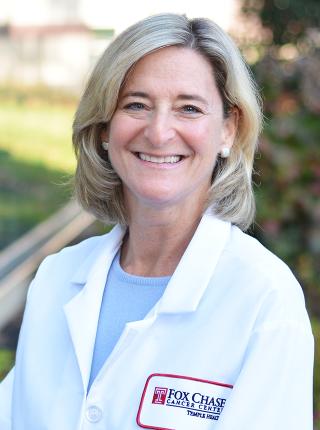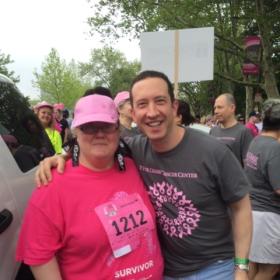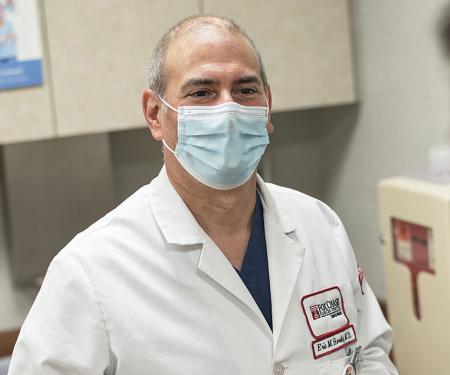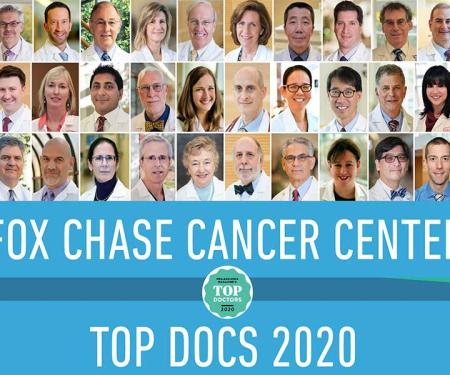Related Articles
00 / 00
New Inpatient Visitor Check-In Process Effective March 10. Learn more here.

Request an Appointment
Professor, Department of Radiation Oncology
Chief, Division of Breast Radiation Oncology
Vice Chair for Quality Assurance and Process Improvement
Breast Cancer
Brachytherapy
After completing my training at Fox Chase, I joined the radiation oncology department attending staff in 1999. I chose to stay at Fox Chase because I wanted to remain in a research setting at a hospital with the highest excellence in cancer care. In my practice, I specialize in treating patients with gynecological cancers, breast cancer and sarcoma.
As a female oncologist, I address the many unique treatment issues specific to women. My patients discuss their personal issues surrounding their cancer, as well as the side effects of treatment. It is gratifying to offer comfort, not only through radiation treatment, but afterwards in their follow-up care.
As director of breast and gynecologic radiation oncology, I believe it is important to spend time educating my patients. These women have many personal issues related to quality-of-life. We provide education and support from diagnosis throughout treatment and follow-up care.
A particular accomplishment of mine was changing the practice of gynecological high-dose-rate brachytherapy in 2001 from an inpatient to an outpatient procedure for patients. This procedure is now much easier for patients to tolerate, while maximizing our highest quality of care.
At Fox Chase, we use the most sophisticated technology for both external beam (IMRT) radiation therapy and brachytherapy. We have a CT and an MRI simulator for gynecological cancer treatment planning. We use CT/MR-based brachytherapy treatment planning for patients with gynecological cancers.
As a breast cancer specialist, I am part of the Breast Evaluation Center's multispecialty team at Fox Chase. My role is integral in developing the best course of treatment for our newly diagnosed breast cancer patients. At Fox Chase, we use IMRT to treat women with breast cancer.
In treating patients with sarcoma, I collaborate with the surgeons and medical oncologists to determine the best course of treatment. Before surgery, radiation therapy helps to reduce the tumor's size, making it easier to remove. Following surgery, radiation therapy can improve local control and chance for cure. In treating sarcomas, we use an MR simulator in the planning process, which helps improve accuracy of treatment.
Research is another interest of mine. I am a member of multiple national committees aimed at constantly improving and advancing the treatment and outcome of gynecologic and breast cancers. I am the principal investigator for several national trials evaluating novel, innovative approaches for breast and gynecologic cancer treatment. Each year, I am invited to present at many professional meetings, including the Gynecologic Oncology Group (GOG), ASTRO (American Society for Therapeutic Radiology and Oncology), and the Radiation Therapy Oncology Group (RTOG).

When I was growing up in Philadelphia’s Olney-Feltonville neighborhood, my grandmother made sure I knew how to run a household. She taught all of her grandchildren how to do essential household tasks, like sewing and cooking. I always looked forward to the day when I’d get to follow in her footsteps and pass these skills along to my son, Alex.
But when I was diagnosed with breast cancer in 2015 at age 43, I found myself worried about whether I would be able to carry on family traditions like this.

As a cancer survivor of over 20 years and as a mother who lost a daughter to cancer, I can say with certainty that cancer does not discriminate. Prior to my diagnosis, there was no family history of cancer and I always lived a healthy lifestyle, yet this disease affected me. A diagnosis can sneak up on anyone, regardless of how healthy they appear.

Linda Snow was active, maintained a healthy diet, and underwent genetic testing, followed by two double mastectomies and a hysterectomy. So she was shocked that even with all of these precautionary procedures that she still got breast cancer. Linda sought treatment at Fox Chase Cancer Center, where she met with her treatment team. After a long road, she is now cancer free and credits her survival to Fox Chase. "Where you start your cancer treatment really does make a difference," said Linda. "You have got to act with a sense of urgency because it can mean the difference between life and death. I unequivocally believe that I am alive today because I chose Fox Chase."

Michelle Palandro was a healthy and active 27-year-old woman when she was diagnosed with liposarcoma. After first meeting with an oncologist at a large teaching hospital, Michelle was not convinced that this was the best place for her treatment. She sought a second opinion and was pleased with the compassion and thoroughness of the treatment team at Fox Chase. After undergoing surgery, chemotherapy, and radiation therapy, Michelle is happy to report that she has been cancer free since 2012, and that she gave birth to a healthy baby boy in 2015. "At Fox Chase, every single person I met and every single nurse who took care of me was exceptional."
Breast Cancer; Gynecologic Cancers; Brachytherapy
The following ratings and reviews are based on verified feedback collected from independently administered patient experience surveys. The ratings and comments submitted by patients reflect their own views and opinions. Patient identities are withheld to ensure confidentiality and privacy. Learn more about our Patient Experience Ratings.









Patient comments